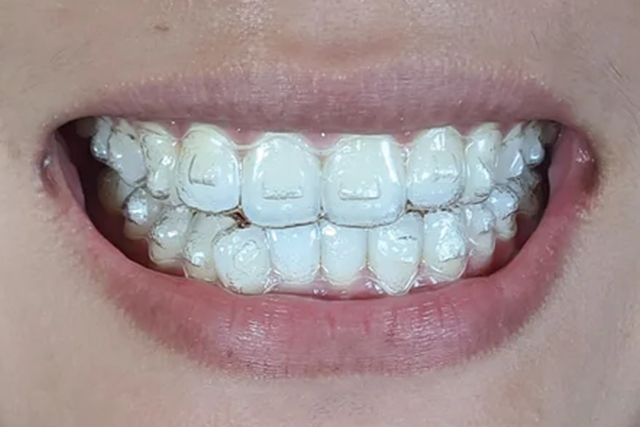Discover Effective Dental Procedures for a Brighter Smile - Discover Oral Bonding
From fixing broke or discolored teeth to shutting spaces and improving enamel, oral bonding offers a functional solution. By discovering the nuances of oral bonding, one can gain understandings into how this therapy compares with various other alternatives, supplying a comprehensive sight of the opportunities for accomplishing a brighter smile.
Advantages of Oral Bonding
Dental bonding provides a minimally invasive and economical solution for enhancing the appearance of teeth. This treatment involves the application of a tooth-colored resin material to the surface area of the tooth, which is after that hardened utilizing an unique light. One of the vital advantages of oral bonding is its capacity to fix small imperfections such as chips, fractures, or discoloration in a single see to the dentist. Unlike other cosmetic oral treatments, such as crowns or veneers, bonding usually calls for minimal to no removal of the natural tooth enamel, making it a conventional alternative for smile improvement.

Treatment Summary
Starting with an examination of the process associated with dental bonding, we look into the thorough summary of this aesthetic dental procedure. Oral bonding is a minimally intrusive strategy used to enhance the look of teeth by using a tooth-colored resin product to the surface area. The procedure starts with the dentist picking a material color that matches the natural color of the client's teeth.
Next, the tooth surface area is roughened, and a conditioning liquid is related to assist the bonding material adhere effectively. The material is after that built and formed to the desired form before being hardened utilizing a special light. When the material has solidified, the dentist will even more trim and polish it to blend seamlessly with the surrounding teeth.
Dental bonding is commonly used to repair broken or split teeth, close spaces in between teeth, reshape teeth, and cover spots. It is a affordable and quick means to boost the aesthetics of a smile, often finished in a solitary see to the dental expert's office.
Candidates for Oral Bonding
When identifying eligibility for oral bonding, a detailed exam of the individual's oral health and aesthetic objectives is carried out. Dental bonding is a versatile cosmetic dental care treatment ideal for people with minor imperfections such as damaged, fractured, tarnished, or irregular teeth. Prospects for dental bonding must have overall excellent dental health, devoid of gum illness or dental cavity, as these conditions might impact the bonding's longevity and performance.
Suitable candidates for oral bonding are individuals aiming to improve the look of their smiles without substantial dental job. Dental bonding is a traditional treatment alternative that can attend to visual worries without the need for even more intrusive treatments. It is likewise a preferred option for those looking for quick outcomes, as bonding can frequently be finished in a single see to the dentist's office.
Throughout an assessment with an oral professional, the individual's specific issues and wanted outcomes will be reviewed to identify if oral bonding is one of the most suitable treatment choice - dental bonding mississauga. By recognizing the requirements for candidateship, people can make informed decisions regarding boosting their smiles via dental bonding
Aftercare Tips
Upon completing a dental bonding procedure, maintaining proper aftercare is vital to ensure the longevity and efficiency of the treatment. After the bonding process, it is vital to stay clear of consuming tough foods or biting on items that might possibly harm the adhered location. In addition, avoiding habits like nail-biting or chewing on pens can help prevent premature wear and tear on the bonded material.
Regular oral hygiene Read More Here practices, consisting of cleaning with a soft-bristled tooth brush and non-abrasive tooth paste, are essential to protect against and maintain the bond why not try this out discoloration - emergency dentist mississauga. It is advised to floss day-to-day to get rid of any type of food bits that may accumulate around the bonded location, lowering the threat of decay
Routine oral exams every 6 months are necessary to monitor the problem of the bonding and attend to any type of issues promptly. Throughout these sees, your dental expert can evaluate the bond's integrity, make any essential repair services, and offer guidance on keeping ideal oral wellness to extend the life-span of the oral bonding.
Comparison With Various Other Treatments
In reviewing oral bonding as a therapy alternative, it is important to consider its advantages and restrictions in comparison to alternate procedures. One typical option to dental bonding is veneers. Veneers are thin shells of porcelain or composite resin that are custom-made to cover the front surface of teeth. While veneers are more stain-resistant and resilient than bonding, they are also much more expensive and require even more prep work of the all-natural tooth framework.
An additional popular alternative is oral crowns. Unlike bonding, crowns are more sturdy and can stand up to greater biting pressures.
Ultimately, the choice in between dental bonding, veneers, or crowns depends upon the individual's certain needs, spending plan, and desired end result. Consulting with a dental expert can help figure out the most appropriate therapy choice for attaining a brighter and much more certain smile.
Conclusion
In verdict, oral bonding is a reliable procedure for improving the appearance of teeth by remedying blemishes such as staining, voids, and chips (sleep dentistry mississauga). Oral bonding uses a cost-efficient and convenient option contrasted to various other more intrusive oral treatments.
In addition, oral bonding is a functional therapy that can attend to a selection of visual worries, consisting of closing spaces between teeth, reshaping misaligned teeth, or making teeth appear longer.Beginning with an evaluation of the process involved in oral bonding, we dive right into the detailed introduction of this cosmetic dental treatment. Prospects for oral bonding must have general good dental wellness, complimentary of periodontal disease or tooth decay, as these problems may affect the bonding's longevity and performance.
